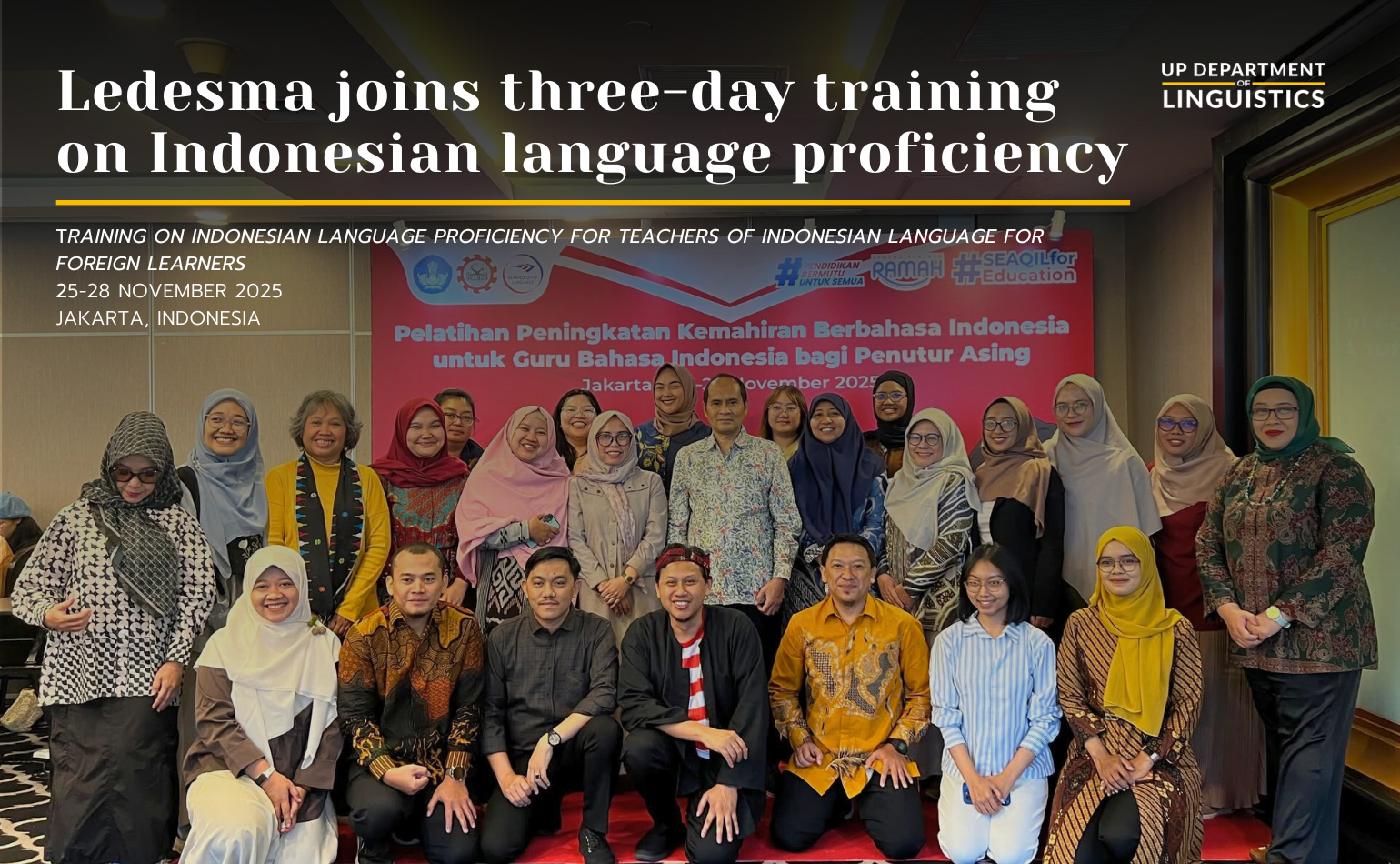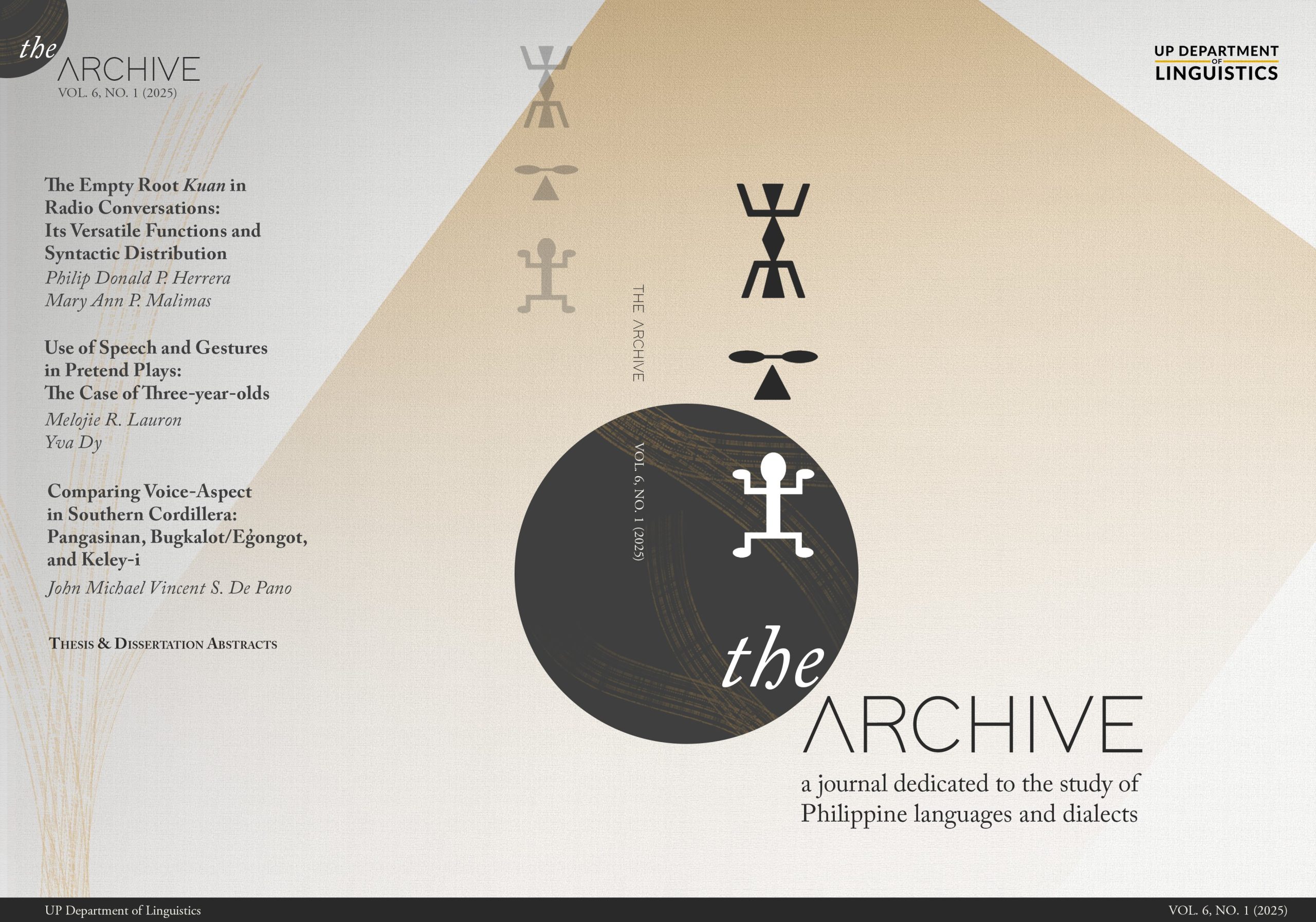
Several members of the Department will be participating in the 31st Annual Meeting of the Southeast Asian Linguistics Society (SEALS 31) organized by the University of Hawaiʻi at Mānoa. The hybrid conference will be held in-person and online this May 18–20, 2022.
Assoc. Prof. Aldrin Lee is one of the conference’s plenary speakers and he will be delivering his lecture titled “Exploring Island Linguistics in the Philippines: Mooring Languages to Islandness.” Below is the abstract of his lecture:
Exploring Island Linguistics in the Philippines: Mooring Languages to Islandness
This study explores the feasibility of Island Linguistics as a research program in the Philippines by providing case studies of what could potentially be considered as “island languages” in the archipelago. By using “Island Linguistics”, I attempt to advance the views put forward by Nash et al. (2020) and Nash, Markússon, & Bakker (2020) on the need to disentangle the study of linguistic forms and processes shaped in an island environment from the more established area of Island Studies and draw more attention towards investigations of topography-driven properties of human languages. While other scholars have previously examined the relationship between island topography and specific language properties (e.g. Nagaya [2022] on the directionals of Lamaholot spoken in Flores Island; Nash [2017] on islands and toponymy in Australia), there is still neither any known proposal for an island-spoken variety to be putatively considered as an “island language” nor any attempt to find cross-linguistic patterns that could be attributed specifically to the islands and their “islandness” (cf. Palmer et al., 2017).
Building upon the initial criteria for an island language proposed by Nash et al. (2020), I first examine the case of Cuyonon (ISO 639-3 cyo), a West Bisayan variety primarily spoken in the island of Cuyo (part of Palawan Province, in southwestern part of the Philippines). The data from Cuyonon suggest a robust relationship between “islandness” and language, as shown by the former being deeply entrenched in the semantic system, frames of spatial reference, and social practices related to language use. Second, I present additional, albeit smaller, case studies from other island-spoken Philippine languages from different subgroups to identify possible shared features including Agutaynen (agn), Bolinao (smk), Kagayanen (cgc), and Porohanon (prh). Lastly, I propose ways how to possibly account for these features in the grammatical description and in larger documentation projects involving island languages in the Philippines in the future.
Asst. Prof. Maria Kristina Gallego will be presenting the study “Contact or inheritance? New evidence on the Proto-Philippines hypothesis” with Jonathan Kuo (National Taipei University of Technology), Victoria Chen (Victoria University of Wellington), Isaac Stead (Victoria University of Wellington), and Benjamin van der Voorn (Payap University).
MA Ling alumnus Dr. Ivan Paul Bondoc (University of Toronto) will also present two papers with Dr. Amy Schafer (University of Hawaii at Manoa), “Pivot accessibility and quantifier float in Tagalog: An experimental investigation” and “Verb semantic effects on gradient and variable word order expectations in Tagalog.”
Among the poster presenters are Dept. Instructor Noah Cruz, who will discuss his study “Revisiting Filipino and Hiligaynon Numerals,” Asst. Prof. Divine Angeli Endriga, whose presentation is titled “An affix-based subcategorization of Hiligaynon verbs,” and Asst. Professorial Fellow Kritsana Canilao, whose work is titled “Thai tones of native Filipino speakers: the effect of L1 prosodic background and training.” MA Ling alumna Ava Villareal will also present her study “Coordination in Surigaonon Compound Sentences: Identifying Forms and Meanings.” The poster presentations are already posted on the conference website.The complete program for SEALS 31 is available online at https://seals31.sched.com/. Other important information regarding the conference can be found at http://ling.lll.hawaii.edu/sites/seaconfs/.
Published by Patricia Asuncion



